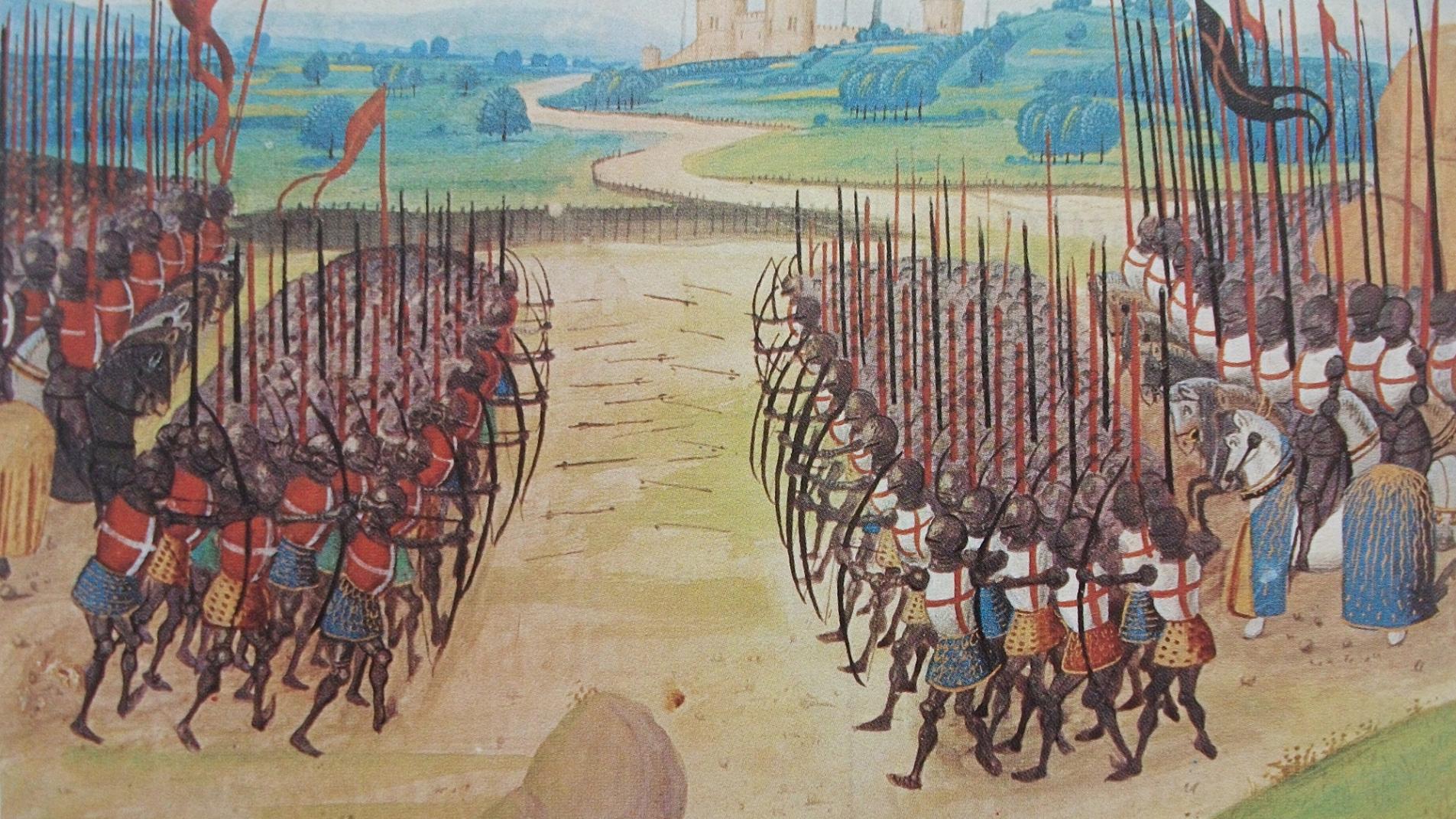
The Battle of Agincourt took place on October 25 1415 in Northern France. The stirring story of Henry V’s forces defeating a much larger French army has become one of the most celebrated events in British history, inspiring poems and play through the ages. What’s a little less well known is the role Brecon and its people played in this famous battle. It has been said that ‘Welsh archers were the reason why Henry V won the Battle of Agincourt’. While historical accounts vary, it’s a fact that 500 archers and 23 men-at-arms travelled from Wales to France to fight alongside the King.
Of this group, 10 men-at-arms, 13 mounted archers and 146 foot archers formed the contingent from the Brecon area. The town’s Agincourt connections remain visible six centuries later in historic Brecon Cathedral. One of the most striking reminders is the beautiful stained-glass window in the cathedral’s south transept which depicts Sir Roger Vaughan of Bredwardine, a nobleman who fought with Henry V at Agincourt. Sir Roger was the son-in-law of Dafydd ap Llewelyn ap Hywel, another nobleman who made the trip to France. Better known as Dafydd Gam (in Welsh ‘gam’ means lame or deformed), he was regarded as a traitor by many in Wales due to his opposition to Owain Glyndwr.
According to legend, Roger and Dafydd died at Agincourt defending the King, with both men being knighted on the battlefield in recognition of their sacrifice. But the story of Agincourt isn’t only about lords and kings. Many of the Archers who joined up with Henry’s army would have been commoners. Though we don’t know much about their lives, you can still read their names on a replica of the indenture (a contract listing the men and boys who went away to war) on display in Brecon Cathedral. The ancient stone believed to be used by the Brecon archers to sharpen their arrowheads, in also on display.
To learn more about the Welsh archers’ story agincourt600wales.com